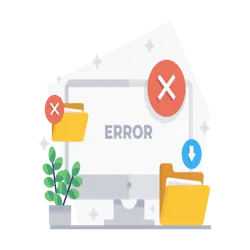If you’re a merchant utilizing ACH processing and you’ve received ACH return code R45, you’re in the right place. Because ACH return code R45 is uncommon, it is frequently misunderstood. We’ll explore what ACH processing is, why ACH returns happen, and what return code R45 really means.
Note: If you’ve received a different return code, please refer to our comprehensive list of ACH return codes.

What Is ACH processing?
ACH processing is a bank-to-bank electronic funds transfer allowing businesses to process payments electronically over the Automated Clearing House (ACH) Network. This is a nationwide system connecting banks to each other. Some popular examples of ACH transactions include payroll direct deposits, online bill payments, tax refunds, and even paying vendor invoices.
For an ACH payment, you’ll need bank account information. This includes the routing number and account number, the customer’s name, and authorization to bill their account.
ACH payments are more secure and cost-effective than other bank-to-bank payment methods such as wire transfers. (For a breakdown of the differences between the two, check out our wire transfers vs. ACH payments explainer!) Additionally, ACH payments pose a much smaller risk for fraudulent activity because you know exactly where your money is going and coming from. Although it might take a little longer, this process of sending and receiving funds has brought considerable security and peace of mind to consumers and business owners across the nation.
What Does ACH Return Code R45 Mean?
When submitting an ACH payment, the network initially funds the amount into your account within a few days of the request. This is done with the assumption that the promissory note will backfill once the transaction clears. In other words, the ACH Network essentially trusts that you’ve sent them the correct information and that the sender has adequate funds in their account to fulfill it. However, when processing ACH payments, you always do run the risk of returned or defaulted payments.
A payment takes several days to clear on both the payer’s and recipient’s side, and sometimes things can go wrong within that time. In this instance, you will receive what’s known as an “ACH return.” There are a few common reasons for ACH return codes, but in this article, we will specifically look at ACH return code R45.
ACH return code R45 indicates that the provided name or company for the transaction is incorrect. There are several reasons why this can occur: the recipient’s name might not match the account on file at the bank, a typo can occur while entering their information, or, less commonly, their legal name has changed since their last transaction. If you receive ACH return code R45, it’s important to contact your customer and your bank in order to understand and resolve the issue at hand.
However, ACH return code R45 is uncommon because it only applies to government accounts. If you receive this return code, contact the government agency with which you do business in order to resolve this code.

Formal Definition
The formal definition of an ACH return code R45 is: “Invalid Individual Name/Company Name.”
The individual or company name provided in field 3 of the addenda record either doesn’t match an affiliated name in the federal agency’s records or fails to include at least one alphanumeric character.”[1]HelpJuice. “ACH Return Codes with Definitions”. Accessed October 31, 2022.
Solutions to Fix R45 Return Code
To resolve the ACH return code R45, contact your customer (in this case, the government agency with which you do business) to discuss rerunning the ACH transaction. In the meantime, you can request an alternate form of payment from them such as cash, a physical check, or even a credit card payment.
Here are some suggested actions you can take to ensure that you ultimately receive the funds owed to your business:
- If they initiated the payment, contact your customer. Inform them of why the transaction was declined and request that they try processing the payment again.
- If you initiated the payment, contact your customer. Ask for an alternative payment method to complete the payment on your end.
- If they’re positive the information they entered was correct, request that they attempt the transaction using a different bank account.
- Request that the goods in question (if applicable) are returned to you to negate the need for payment.
In the end, if your business accepts ACH payments, you will likely experience your fair share of return codes. Fortunately, the occurrence of returned ACH payments is rare and often quite easy to resolve!





